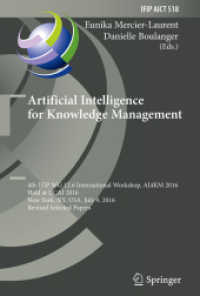- ホーム
- > 洋書
- > 英文書
- > Science / Mathematics
Full Description
Finite model theory is an area of mathematical logic that grew out of computer science applications. The birth of finite model theory is often identified with Trakhtenbrot's result from 1950 stating that validity over finite models is not recursively enumerable;






